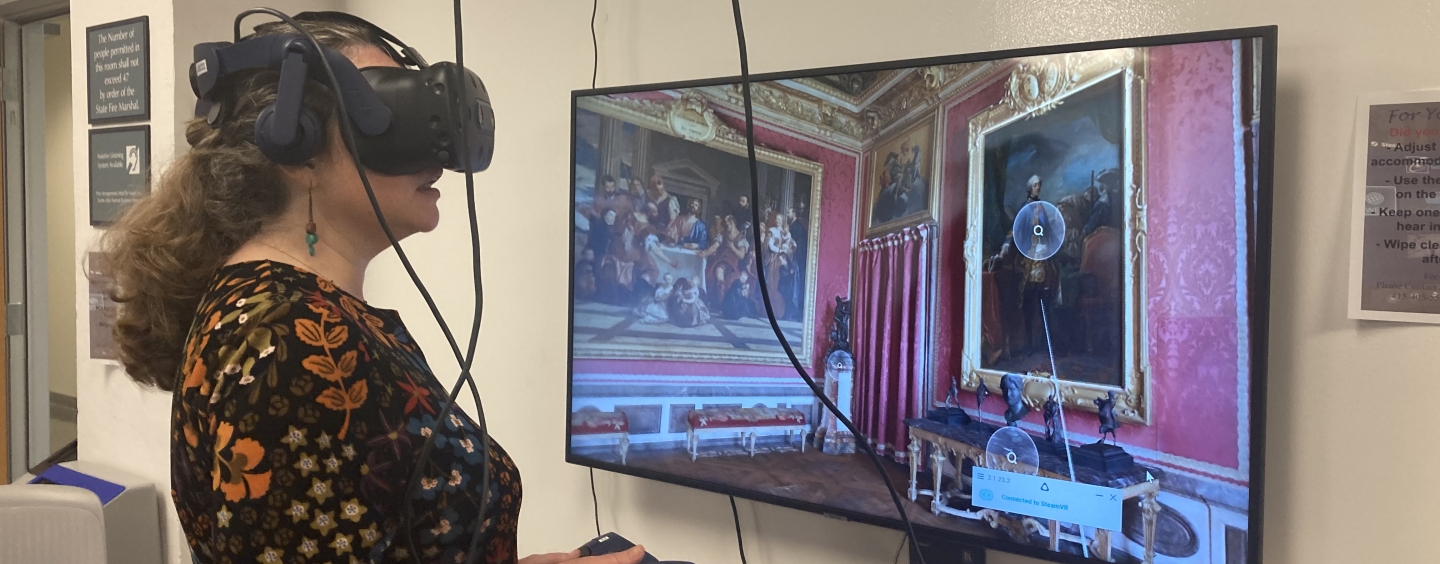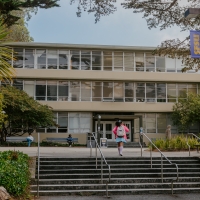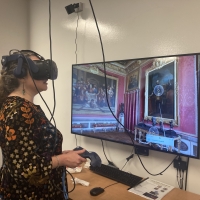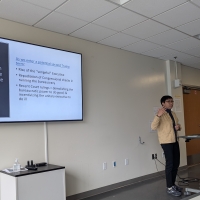Exploring Resources and Technology: GRN 705 Class Visit to the SF State J. Leonard Paul Library

On September 29, 2024, our GRN 705 class had the opportunity to explore the wealth of resources available at the SF State J. Leonard Paul Library. The visit was a hands-on experience designed to deepen our understanding of the many ways research, technology, and data collection intersect with the study of aging. Our day at the library included tours, workshops, and introductions to cutting-edge tools that will enhance our work in gerontology.
Library Reference Tour and Data Collection Workshop
Students heard from Gerontology Reference Librarian, Joe Daniels, who provided insights into the wide range of materials available in the library’s gerontology collection. The conversation switched to a data collection, where we discussed different methods of collecting data, such as using data sets and literature reviews. Joe introduced us to qualitative and quantitative analysis techniques, emphasizing the importance of learning from peer-reviewed research to inform our projects. This workshop was invaluable as it provided practical insights into how we can effectively gather and analyze data in our own research endeavors.
Exploring Technology: VR Lab, Makers Lab, and Digital Media Studio
Our tour included a visit to the VR Lab and Makers Lab, where we were introduced to Virtual Reality technology and its potential applications in gerontology. These resources offer exciting possibilities for creating immersive experiences that could enhance our research and understanding of the lived experiences of older adults. Faculty and students can collaborate in these spaces, with support from library staff who guide them using the equipment and software.
The Makers Lab is a creative space where digital media projects come to life. With high-end computers equipped with specialized software like Adobe Creative Suite, FinalCut Pro, and Pro Tools, this lab offers tools for producing digital media that can support our coursework and research presentations. We also learned about the library’s digital media equipment checkout, large-format poster printing services, and image/document scanners, all of which are available for student use.
Walking the Stacks
Walking through the stacks, we reviewed a variety of journals, thesis, and books that are essential for any researcher exploring aging from a multidimensional perspective. It was great to take a break from our screens and walk around the library and see the study rooms and reference resources.
Conclusion
This visit was a reminder of how essential it is to leverage both traditional resources and modern technology in gerontology research. From walking the stacks and exploring the vast collection of gerontology-related literature to diving into the possibilities offered by VR technology and digital media, this experience broadened our understanding of the tools at our disposal. The insights we gained will be instrumental as we continue to develop our projects and contribute to the field of aging studies.
Students then reflected on technology and the use of VR in the field of aging for two discussion group projects during asynchronous weeks of the course. This library experience provided invaluable groundwork for two critical projects in our GRN 705 course, allowing students to apply firsthand insights from our visit to the SF State Makers Lab and VR Lab. In the first project on Cognitive Stimulation Activities and Technologies for Older Adults, students researched a range of cognitive tools, from brain games to emerging technologies like brain-computer interfaces. The Makers Lab’s resources, including VR setups and high-end software, gave students direct exposure to tools that support cognitive health. By exploring these hands-on, they could reflect on how such technology—immersive VR like Google Maps—can help older adults enhance memory and cognitive function, fostering mental engagement through familiar, meaningful activities.
The second project, Social Isolation and Loneliness: Virtual Reality Socialization Experience, encouraged students to assess VR’s potential in reducing social isolation for seniors. Experiences in the Makers Lab and VR Lab were particularly relevant here, as students explored environments like Google Earth VR and Open Brush. By trying these themselves, they could envision how VR allows older adults to virtually travel, revisit familiar places, or join group-centered activities, touring iconic landmarks. This immersive experience underscored VR's potential for social connection, while also revealing practical challenges, like user-friendliness and motion sickness, that need to be addressed for effective integration into care settings.
Through these projects, students gained a real-world understanding of how innovative tools and spaces, like those offered at the SF State Library, are essential for exploring and advancing age-friendly technologies. These firsthand experiences provided a critical foundation for our discussions on how technology can transform gerontology practice, empowering both caregivers and older adults in their pursuit of cognitive and social well-being.


